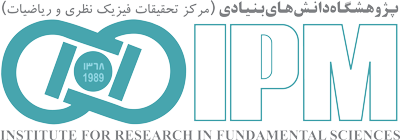“School of Nano-Sciences”
Back to Papers HomeBack to Papers of School of Nano-Sciences
| Paper IPM / Nano-Sciences / 18313 |
|
||||||
| Abstract: | |||||||
|
Simple few-body systems often serve as theoretical laboratories across various branches of theoretical physics. A prominent example is the two-electron Harmonium model, which has been widely studied over the past three decades to gain insights into the nature of the electron-electron correlations in many-electron quantum systems. Building on our previous work [Riyahi et al., Phys. Rev. B 108, 245155 (2023)], we introduce an analogous model consisting of an electron and a positively charged particle (PCP) with variable mass, interacting via Coulomb forces while confined by external harmonic potentials. Termed the exotic Harmonium model, this provides insights into the electron-PCP correlations, a cornerstone of the emerging field of the ab initio study of multi-component many-body quantum systems. Through a systematic exploration of the parameter space and numerical solutions of the corresponding Schrodinger equation, we identify two extreme regimes: the atom-like and the particle-in-trap-like behavior. The electron-PCP correlation dominates in the atom-like regime, significantly influencing physical observables, while its role diminishes in the particle in trap like limit. Between these two extremes lies a complex intermediate regime that challenges qualitative interpretation. Overall, the exotic Harmonium model offers a powerful framework to unravel the electron PCP correlations across diverse systems, spanning particles of varying masses and conditions, from ambient to high pressure environments.
Download TeX format |
|||||||
| back to top | |||||||



















